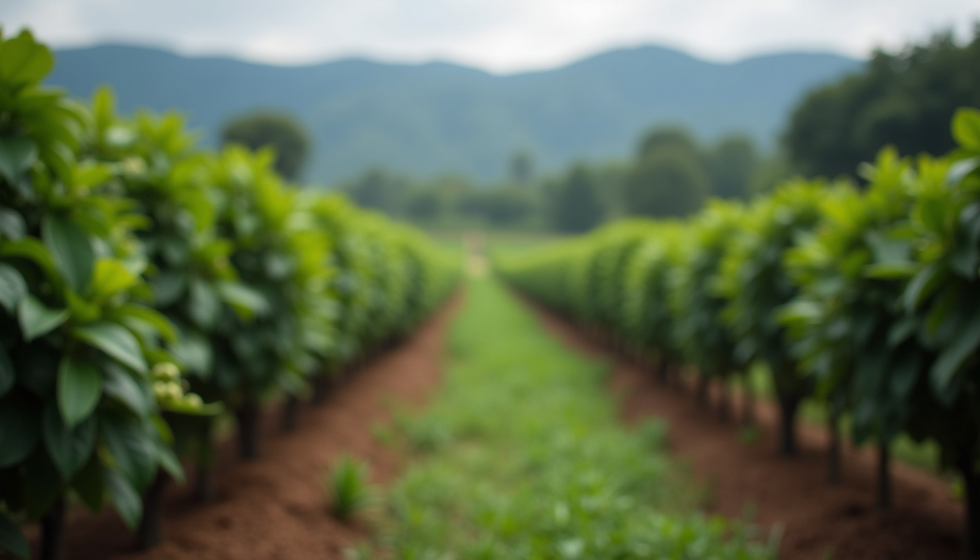Revolutionary Farming Techniques for Modern Agriculture
- Sep 23
- 3 min read
Agriculture is evolving rapidly, driven by the need to feed a growing global population while preserving natural resources. Modern farm innovations are transforming traditional farming into a more efficient, sustainable, and productive industry. These advancements help farmers optimize yields, reduce waste, and adapt to changing environmental conditions. This article explores some of the most impactful techniques shaping the future of agriculture.
Embracing Modern Farm Innovations for Sustainable Growth
Modern farm innovations focus on integrating technology and science to improve farming practices. These innovations range from precision agriculture tools to advanced irrigation systems. By adopting these methods, farmers can increase crop productivity and reduce environmental impact.
For example, precision agriculture uses GPS and satellite data to monitor soil conditions and crop health. This allows farmers to apply water, fertilizers, and pesticides only where needed, minimizing waste and costs. Drones are also becoming popular for aerial crop monitoring, providing real-time data on plant health and pest infestations.
Another key innovation is automated machinery. Tractors and harvesters equipped with AI and robotics can perform tasks with minimal human intervention, increasing efficiency and reducing labor costs. These machines can work longer hours and with greater accuracy than traditional equipment.

Key Technologies Driving Modern Farm Innovations
Several technologies are at the forefront of modern farm innovations. Understanding these can help farmers and agribusinesses make informed decisions about adopting new methods.
Internet of Things (IoT): Sensors placed in fields collect data on soil moisture, temperature, and nutrient levels. This data is transmitted to farmers’ devices, enabling precise irrigation and fertilization.
Artificial Intelligence (AI): AI algorithms analyze data from sensors and drones to predict crop diseases, optimize planting schedules, and improve yield forecasts.
Vertical Farming: This technique involves growing crops in stacked layers indoors, using controlled environments. It saves space and water while allowing year-round production.
Hydroponics and Aquaponics: These soil-less farming methods use nutrient-rich water solutions to grow plants. Aquaponics combines fish farming with hydroponics, creating a symbiotic ecosystem.
These technologies not only boost productivity but also promote sustainability by reducing water use, chemical inputs, and land degradation.

What are the innovative techniques used in agriculture?
Innovative techniques in agriculture are designed to address challenges such as climate change, resource scarcity, and food security. Here are some of the most effective methods currently in use:
Conservation Tillage: This method reduces soil disturbance by minimizing plowing. It helps maintain soil structure, reduce erosion, and increase organic matter.
Cover Cropping: Planting cover crops like clover or rye during off-seasons protects soil from erosion, improves fertility, and suppresses weeds.
Crop Rotation: Alternating different crops in the same field improves soil health and reduces pest buildup.
Biological Pest Control: Using natural predators or biopesticides to manage pests reduces reliance on chemical pesticides.
Smart Irrigation Systems: These systems use weather forecasts and soil moisture data to optimize watering schedules, conserving water and improving crop health.
Farmers can combine these techniques with technology to create resilient and productive farming systems.

Benefits of Adopting Innovative Farming Techniques
The adoption of innovative farming techniques offers numerous benefits for farmers and the environment:
Increased Yields: Precision application of inputs and better crop management lead to higher productivity.
Cost Savings: Efficient use of water, fertilizers, and pesticides reduces expenses.
Environmental Protection: Reduced chemical use and soil conservation practices help preserve ecosystems.
Climate Resilience: Techniques like crop rotation and cover cropping improve soil health, making farms more resilient to extreme weather.
Labor Efficiency: Automation and AI reduce the need for manual labor, allowing farmers to focus on strategic decisions.
By integrating these techniques, farms can become more profitable and sustainable in the long term.
Preparing for the Future of Agriculture
The future of farming lies in continuous innovation and adaptation. Farmers should stay informed about emerging technologies and best practices. Here are some actionable recommendations:
Invest in Education: Attend workshops, webinars, and training sessions on modern farming methods.
Start Small: Pilot new technologies on a small scale before full implementation.
Collaborate: Work with agricultural experts, technology providers, and other farmers to share knowledge.
Monitor Results: Use data analytics to track the impact of new techniques and adjust accordingly.
Focus on Sustainability: Prioritize methods that conserve resources and protect the environment.
By embracing these strategies, farmers can ensure their operations remain competitive and sustainable.
Modern farm innovations are revolutionizing agriculture by making it more efficient, sustainable, and resilient. From precision agriculture to smart irrigation and biological pest control, these advancements offer practical solutions to today’s farming challenges. Staying informed and open to change will be key to thriving in the evolving agricultural landscape.



